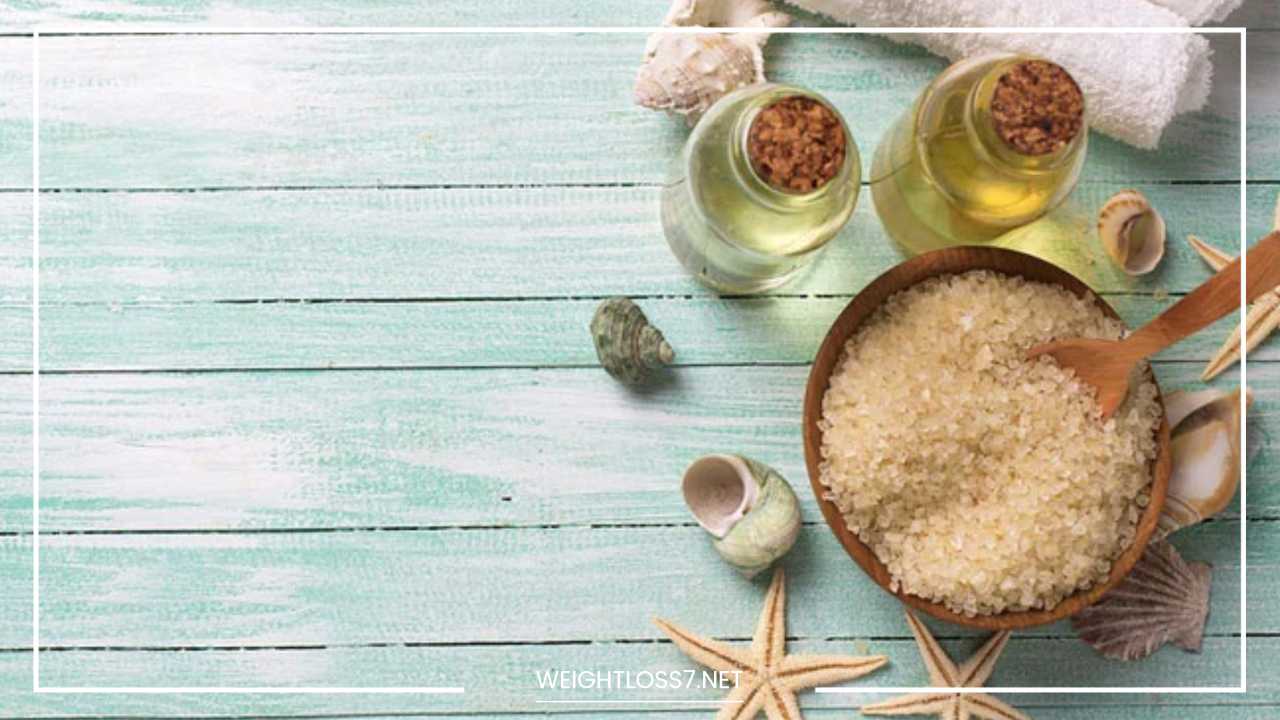Aromatherapy 101: Uses & Safety Tips

Aromatherapy
Unveiling the Power of Plants: A Deep Dive into Aromatherapy
For centuries, humans have walked hand-in-hand with the healing power of plants. From soothing teas brewed with fragrant chamomile to poultices infused with the essence of potent herbs, nature’s bounty has provided a vast arsenal for promoting well-being.
Aromatherapy, the practice of harnessing the therapeutic properties of essential oils extracted from plants, stands as a vibrant testament to this enduring tradition.
This comprehensive guide delves into the fascinating world of aromatherapy, exploring its rich history, diverse applications, scientific underpinnings, and potential benefits for enhancing your life.
A Walk Through Time: The Ancient Roots of Aromatherapy
The utilization of aromatic plant extracts stretches back millennia, weaving itself into the fabric of ancient civilizations.
Egyptians, revered for their mastery of embalming techniques, incorporated fragrant resins and oils like myrrh and frankincense into the preservation process, believing their aromatic properties held spiritual significance.
Greeks and Romans, renowned for their emphasis on bathing and physical well-being, embraced the power of fragrant plants.
Historical accounts describe the Romans utilizing essential oils like rose and lavender in their elaborate bath rituals, while Greek physicians documented the use of aromatic oils like rosemary and chamomile for various ailments.
Evidence suggests that Eastern cultures also embraced the power of aromatic plants. Traditional Chinese medicine (TCM) has a long history of incorporating fragrant herbs into therapeutic formulas, while Ayurvedic practices in India utilized essential oils for both physical and emotional well-being.
The term “aromatherapy” itself emerged in the early 20th century, with French chemist René-Maurice Gattefossé credited as a pioneer in the field. After accidentally burning his hand in a laboratory mishap, Gattefossé instinctively reached for a nearby container of lavender oil and applied it to the wound.
The remarkable healing process he experienced sparked his lifelong interest in the therapeutic properties of essential oils.
Gattefossé’s work laid the foundation for modern aromatherapy, leading to further research and the development of techniques for extracting and utilizing essential oils.
Beyond the Scent: The Science of Essential Oils
Essential oils are the concentrated, volatile liquids that capture the aromatic essence of a plant. Unlike carrier oils, which are fatty vegetable oils used to dilute essential oils, these potent liquids are extracted through methods like steam distillation, capturing a plant’s unique chemical makeup.
This concentrated essence is composed of hundreds of different aromatic compounds, each with its own potential therapeutic properties.
When inhaled, essential oils interact with the olfactory system, the intricate network of nerves located high in the nasal cavity.
The aroma stimulates odor receptors, sending signals through the olfactory nerve to the limbic system – a primitive part of the brain responsible for emotions, memory, and the nervous system.
This connection between scent and emotional response explains why certain aromas can evoke powerful reactions.
For instance, the sweet, comforting aroma of lavender can trigger feelings of relaxation, while the invigorating scent of peppermint can enhance alertness.
The therapeutic benefits of essential oils extend beyond inhalation. When applied topically (always diluted!), some essential oils can be absorbed through the skin and interact with the body at a cellular level. Studies suggest that these interactions can influence blood flow, promote tissue regeneration, and even impact the immune system.
A Fragrant Arsenal: Exploring the Diverse World of Essential Oils
The world of aromatherapy offers a vast array of essential oils, each with its own distinct aroma and potential therapeutic benefits. Some of the most popular essential oils and their properties include:
- Lavender (Lavandula angustifolia): Renowned for its calming and relaxing properties, lavender oil is often used to promote sleep, ease anxiety, and relieve headaches. Its soothing aroma can also alleviate symptoms of stress and promote a sense of well-being.
- Peppermint (Mentha piperita): Known for its invigorating and refreshing aroma, peppermint oil can help improve focus and mental clarity. It possesses analgesic and anti-inflammatory properties, making it beneficial for relieving muscle aches and headaches (when applied topically, diluted). Studies also suggest its effectiveness in alleviating nausea and digestive discomfort.
- Tea Tree (Melaleuca alternifolia): A natural antiseptic, tea tree oil is a common choice for wound healing, treating acne, and combating fungal infections (when diluted). Its anti-inflammatory properties also make it useful for relieving minor skin irritations.
- Eucalyptus (Eucalyptus globulus): With its decongestant properties, eucalyptus oil can be beneficial for relieving respiratory problems like coughs and colds. Its invigorating aroma can also promote mental clarity and improve alertness.
- Citrus Oils (Lemon, Orange, Grapefruit): Uplifting and energizing, citrus oils can promote feelings of well-being, reduce stress, and improve mood. Their refreshing aromas can also help combat fatigue and enhance concentration.
Beyond the Basics: Unpacking the Growing Body of Research on Aromatherapy
While research on the therapeutic efficacy of aromatherapy is ongoing, there’s a growing body of evidence suggesting its potential benefits for various conditions. Here’s a closer look at some promising areas:
-
Stress and Anxiety Reduction: The calming and relaxing properties of certain essential oils, like lavender and chamomile, have been shown to effectively alleviate symptoms of stress and anxiety in several studies. Research suggests that these oils can lower cortisol levels (the stress hormone) and promote relaxation by influencing activity in the limbic system.
-
Improved Sleep Quality: Lavender oil’s sedative effects have been demonstrated to promote relaxation and deeper sleep, potentially aiding those struggling with insomnia. Studies have shown that inhaling lavender oil before bedtime can significantly improve sleep quality, leading to increased feelings of well-being and daytime alertness.
-
Pain Management: Essential oils like peppermint and rosemary, when used diluted for topical application, may offer pain relief for headaches, muscle aches, and arthritis. The analgesic properties of these oils are believed to work by inhibiting pain receptors and promoting circulation.
-
Mood Enhancement: Uplifting essential oils like citrus varieties (lemon, orange, grapefruit) and bergamot can promote positive emotions and combat feelings of sadness or fatigue. Studies suggest that these oils can stimulate the release of serotonin and dopamine, neurotransmitters associated with mood regulation and feelings of happiness.
-
Alleviating Nausea and Vomiting: Studies investigating the use of essential oils for nausea and vomiting management have shown promising results. Ginger oil, in particular, appears to be effective in reducing nausea and vomiting after surgery or chemotherapy. Its antiemetic properties are thought to work by stimulating the digestive system and reducing inflammation in the gut.
Aromatherapy for Specific Needs: Tailoring Your Approach
The beauty of aromatherapy lies in its versatility. By understanding the unique properties of different essential oils, you can tailor your approach to address specific needs. Here are some examples:
- Promoting Relaxation and Sleep: Create a calming atmosphere in your bedroom by diffusing lavender oil or chamomile oil before bedtime. Alternatively, add a few drops of diluted lavender oil to your bathwater for a relaxing soak.
- Enhancing Focus and Concentration: When feeling sluggish or lacking concentration, diffuse invigorating essential oils like peppermint or rosemary. These oils can help stimulate the mind and improve cognitive function.
- Soothing Muscle Aches and Pain: For topical pain relief, dilute peppermint or clove oil with a carrier oil like jojoba oil and massage it gently onto the affected area. These oils possess anti-inflammatory properties that can help ease discomfort.
- Relieving Respiratory Issues: Ease congestion and coughs associated with the common cold by diffusing eucalyptus oil or tea tree oil. The decongestant properties of these oils can help clear airways and promote easier breathing.
Safety First: Essential Considerations for Responsible Aromatherapy
While generally safe when used appropriately, aromatherapy requires certain precautions to ensure optimal use:
- Essential oils are potent and should never be ingested. Ingestion of essential oils can be toxic and lead to serious health problems.
- Always dilute essential oils with carrier oils before topical application. Essential oils are highly concentrated and can irritate the skin if applied undiluted. Common carrier oils include jojoba oil, almond oil, and grapeseed oil.
- Perform a patch test on a small area of your skin before using an essential oil for the first time. This helps identify any potential allergic reactions you may have to a particular oil.
- Consult a healthcare professional before using aromatherapy if you are pregnant, breastfeeding, or have any underlying medical conditions. Certain essential oils may interact with medications or be contraindicated for specific health conditions.
- Be mindful of potential interactions with medications. Some essential oils may interact with certain medications, so it’s important to consult with your doctor before using them if you are taking any prescription drugs.
- Purchase essential oils from reputable sources to ensure quality and purity. Look for organic, therapeutic-grade essential oils from companies that adhere to strict quality control standards.
Integrating Aromatherapy into Your Daily Life: Simple and Effective Practices
There are numerous ways to integrate aromatherapy into your daily routine and experience its potential benefits. Here are some simple and effective practices:
- Diffusers: These devices disperse essential oils into the air, allowing you to inhale the therapeutic aromas. Choose a diffuser that suits your needs and preferences – ultrasonic diffusers are popular choices for their quiet operation.
- Bath Salts and Lotions: Adding a few drops of diluted essential oil to your bath or lotion can create a relaxing and aromatic soak or massage experience.
- Compresses: For topical relief of aches and pains, apply a diluted essential oil solution to a compress and place it on the affected area.
- Inhalation: Simply sniff a few drops of diluted essential oil from a tissue or an aromatherapy inhaler. This is a convenient way to experience the immediate effects of essential oils, such as promoting alertness with peppermint or calming anxiety with lavender.
Beyond the Basics: Exploring Advanced Techniques
For those seeking a more immersive experience, aromatherapy offers a range of advanced techniques:
- Aromatherapy Massage: Combining the therapeutic benefits of essential oils with the power of massage can be a deeply relaxing and rejuvenating experience. A qualified massage therapist can blend essential oils with carrier oils to create a customized massage treatment tailored to your specific needs.
- Facial Steams: Inhaling the steam infused with essential oils can be a beneficial way to cleanse and invigorate the skin. Add a few drops of essential oil (like tea tree or chamomile) to a bowl of steaming water and drape a towel over your head to create a mini steam tent. Breathe deeply for several minutes, taking care to avoid getting too close to the hot water.
- Saunas and Steam Rooms: Enhance your sauna or steam room experience by adding a few drops of essential oils (like eucalyptus or peppermint) to a bucket of water and placing it on the hot coals (in a sauna) or dispensing it onto the aromatherapy dispenser (in a steam room). The combination of heat and essential oil vapors can promote deeper relaxation and improve respiratory function.
Aromatherapy and You: Creating a Personalized Journey
The world of aromatherapy offers a vast array of possibilities for promoting well-being and enhancing your quality of life.
By understanding the unique properties of essential oils, following safety guidelines, and experimenting with different techniques, you can create a personalized aromatherapy experience that caters to your specific needs and preferences.
Remember, aromatherapy is a complementary therapy, and it’s always best to consult with a healthcare professional before using essential oils if you have any underlying health concerns. Embrace the power of plants and embark on a fragrant journey towards a more balanced and fulfilling life.

















